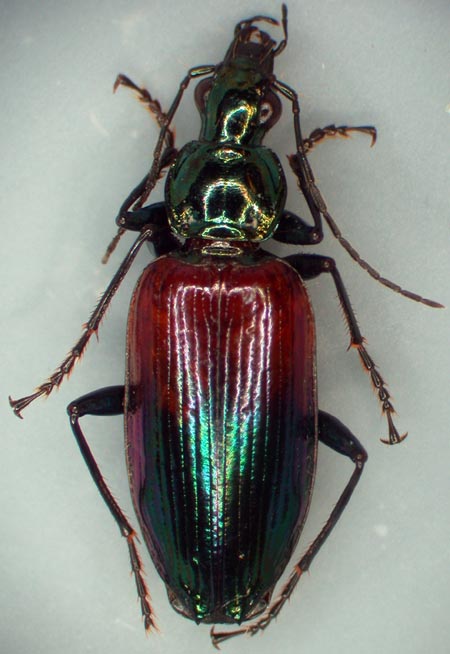Short a Testicle, Sexually Lopsided Beetles Still Do Their Thing

Some beetles are born with an imbalance rare in nature - they only have one testicle.
A new study found that three major groups of beetles, all of the carabid family, lack the usual second testicle. While the beetles get along fine without it, they are violating a major rule in animal biology - bilateral symmetry, where each half of the body mirrors its opposite.
"We've got two lungs, two kidneys, and females and males have paired gonads," said Kipling Will, insect biologist at the University of California, Berkley. "Even our brain has two hemispheres."
Evolution favors bilateral symmetry in animals, Kipling says, "so when we see that the rule is violated, as in the case with these beetles, it gets our attention."
While some animals are radially symmetrical, like jellyfish and starfish, bilateral symmetry is by far the most popular body shape in the animal world.
There are a few exceptions to the rule. Male fiddler crabs have one extra-large claw which they use to attract females and fight male competitors.
Organ absence, however, is less common. When it does occur, there is usually a good reason. For example, snakes only have one lung because of their extreme long and thin body shape, and most birds only have one functioning ovary, which may help optimize their bodies for flight.
Get the world’s most fascinating discoveries delivered straight to your inbox.
With the lopsided beetles, there is no obvious explanation for the disappearance of a testis. Researchers have ruled out advantages to flight or major body form changes as the driving force, but they also don't think it was totally random.
"We found monarchy in three distant groups of carabid beetles - Abacetini, Harpalini, and Platynini - indicating that the loss of the testis occurred at least three separate times in the evolution of the beetles," Will said. "It seems unlikely that it was completely random."
Researchers have noticed that the accessory glands, which are responsible for producing the bulk of the seminal fluid, are larger in these beetles than in other groups. Male crickets provide more than just sperm to the female - they also provide nutrition to the eggs with the inclusion of extra fluid from accessory glands.
"It may be that the male beetles are similarly providing other things than sperm to the females," said James Liebherr, an entomology professor at Cornell University. "But it's a chicken-and-egg question. We don't know what came first. Was the testis lost first, leaving more space for the accessory glands to grow? Or did the testis lose out to make way for a larger accessory gland? That's a subject for further study."
The lack of sexual symmetry seems not to inhibit the ultimate act.
"The beetles with one testis are mating normally and doing their beetle thing," Liebherr said.
In almost all cases it is the left testis that is non-existent, although scientists have no explanation for this. The findings from this study will appear in the April issue of the Journal of Morphology.


